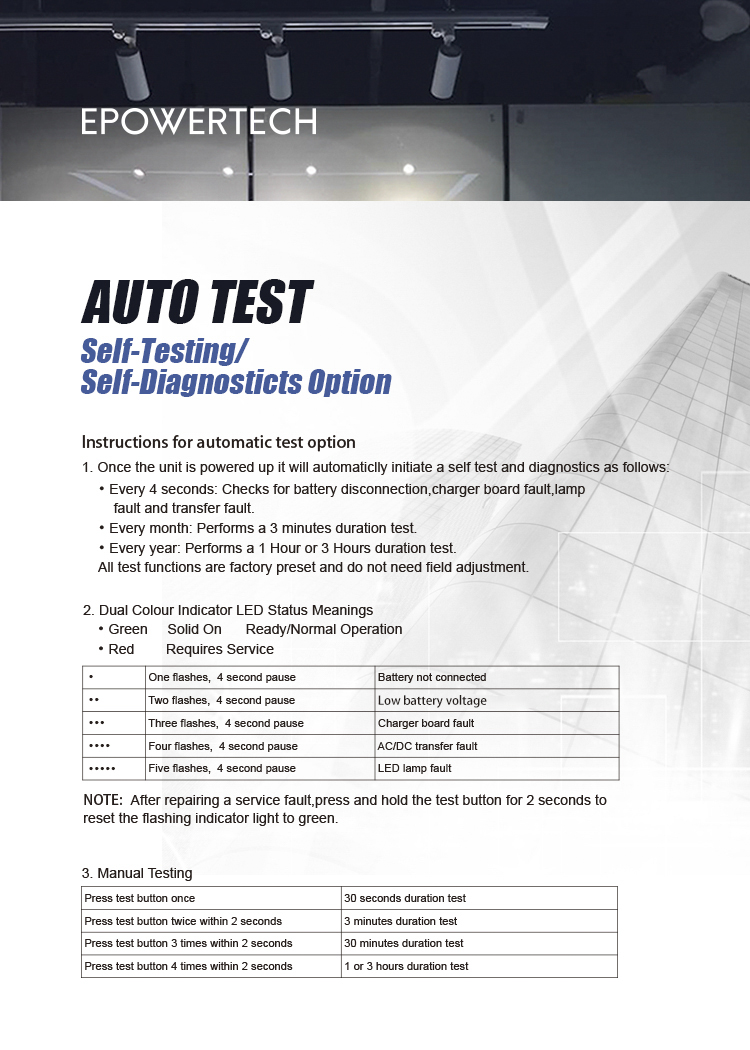Auto Test VS Manual Test of Emergency Lighting
Emergency lighting is an important part of a building designed to help people leave the building safely during an emergency. Therefore, once the emergency lighting is installed, it should be tested regularly to ensure that it meets the requirements of the emergency lighting system and operates properly in an emergency.
Testing of the emergency lighting includes auto test (AT) and manual test (MT).
What’s the difference between auto test and manual test?
Manual test is carried out by controlling the test button on the fixture to simulate the mains failure, so as to detect whether the product can be emergency.
Auto test is carried out by inputting intelligent control software into the PCB board, and fixture detects automatically according to the set programme. Auto test can also be done by manually putting the fixture into the test state via the test button.
Which has advantages and features?
Manual test requires manual operation, monitoring and recording, which requires more labor costs, and is prone to recording errors. In addition, when buildings are occupied, testing is often done only at night or on weekends to prevent interference with people’s normal activities, which will increase the overtime cost of test engineers.
Auto test automatically checks that the batteries and lights in each fixture are fully operational at regular intervals according to the method set by the system. One engineer can test and maintain the system in multiple buildings, which could save a lot of labour and time costs.
What’s the instruction for auto test and manual test?
